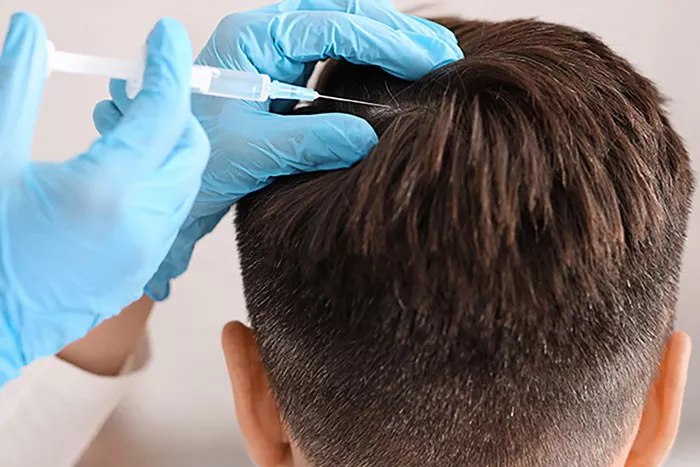Hair loss is a common concern for many individuals, affecting both men and women. Fortunately, advancements in medical technology have made hair transplant procedures increasingly effective and accessible. One question that often arises is: how does hair transplant look after 3 months? This article aims to provide a comprehensive overview of what to expect at this stage of the hair transplant journey, addressing common concerns and providing valuable insights for those considering or undergoing the procedure.
Understanding the Hair Transplant Process
Before delving into how a hair transplant looks after 3 months, it’s essential to understand the procedure itself. Hair transplantation involves harvesting hair follicles from donor areas, typically the back or sides of the scalp, and implanting them into areas experiencing hair loss or thinning. The most common techniques used in hair transplantation are follicular unit transplantation (FUT) and follicular unit extraction (FUE).
In FUT, a strip of tissue containing hair follicles is removed from the donor area and dissected into individual follicular units for transplantation. FUE, on the other hand, involves extracting individual follicular units directly from the donor area using a specialized punch tool.
Regardless of the technique used, the transplanted hair follicles undergo a natural growth cycle following the procedure, which includes a dormant phase, followed by the growth of new hair.
Immediate Post-Transplant Period
In the immediate aftermath of a hair transplant procedure, it’s common for the recipient area to be red, swollen, and tender. This is a normal response to the trauma of surgery and typically subsides within a few days to a week. Patients are usually advised to refrain from strenuous activities and follow post-operative care instructions provided by their surgeon to promote proper healing.
During the first few weeks post-transplant, the transplanted hair follicles enter a resting phase, and the newly implanted hairs may shed. This shedding is a natural part of the healing process and should not cause concern. It’s essential to be patient during this phase, as the final results of the hair transplant will not be apparent until the transplanted follicles enter the growth phase.
Transition Phase: 1 to 3 Months Post-Transplant
As the initial healing process progresses, patients will begin to notice changes in the appearance of their transplanted hair. By the end of the first month, any scabbing or crusts at the transplant site should have resolved, and the redness and swelling should have subsided significantly.
Around the 1 to 3-month mark, many patients experience what is known as the “transition phase.” During this stage, the transplanted hairs enter a dormant phase, and any remaining native hairs in the recipient area may continue to shed. This shedding can be disconcerting for some patients, as it may appear as though the transplant is not taking hold. However, it’s important to understand that this shedding is temporary and is a normal part of the hair growth cycle.
At this stage, some patients may also begin to notice the emergence of new hair growth in the transplanted area. While this growth may initially be sparse and fine, it represents the beginning of the hair follicles’ transition into the active growth phase.
How Does Hair Transplant Look After 3 Months?
By the 3-month mark post-transplant, patients can expect to see noticeable improvements in the appearance of their transplanted hair. While individual results may vary, many patients report that their hair looks thicker and fuller compared to before the procedure.
At this stage, the transplanted hairs will likely have begun to enter the anagen or growth phase of the hair cycle. This means that they are actively growing and will continue to do so over the coming months. The texture and quality of the transplanted hair may also start to resemble that of the surrounding native hair, further enhancing the natural appearance of the results.
It’s important to keep in mind that while significant progress may be visible at the 3-month mark, the full results of a hair transplant can take up to a year or more to fully manifest. Patience is key during this process, as the transplanted hairs will continue to mature and thicken over time.
Tips for Maximizing Results
While the growth and appearance of transplanted hair after 3 months are largely determined by the body’s natural healing processes, there are steps patients can take to maximize their results:
Follow post-operative care instructions: Proper wound care and adherence to post-operative instructions provided by your surgeon can help promote optimal healing and minimize the risk of complications.
Maintain a healthy lifestyle: Eating a balanced diet, staying hydrated, and avoiding smoking can all contribute to overall hair health and promote optimal growth.
Be patient: Hair transplantation is a gradual process, and results take time to fully develop. Trust in the expertise of your surgeon and give your body the time it needs to heal and produce optimal results.
Attend follow-up appointments: Regular follow-up appointments with your surgeon allow them to monitor your progress and address any concerns or questions you may have along the way.
Conclusion
In conclusion, the appearance of a hair transplant after 3 months can vary depending on individual factors such as healing ability, hair growth rate, and surgical technique. However, by the 3-month mark, many patients will begin to see noticeable improvements in the thickness and density of their transplanted hair.
While the transition phase and initial shedding may be concerning for some patients, it’s important to understand that these are normal parts of the healing process and do not indicate a lack of success with the transplant. With proper care and patience, patients can expect to see continued improvements in the appearance of their transplanted hair over the coming months, ultimately achieving natural-looking, long-lasting results.
How Long Does Hair Transplant Scar Take To Heal
Female Hair Loss and Hair Transplant Options
Hair Transplant for Alopecia Areata: Exploring its Viability as a Treatment Option

